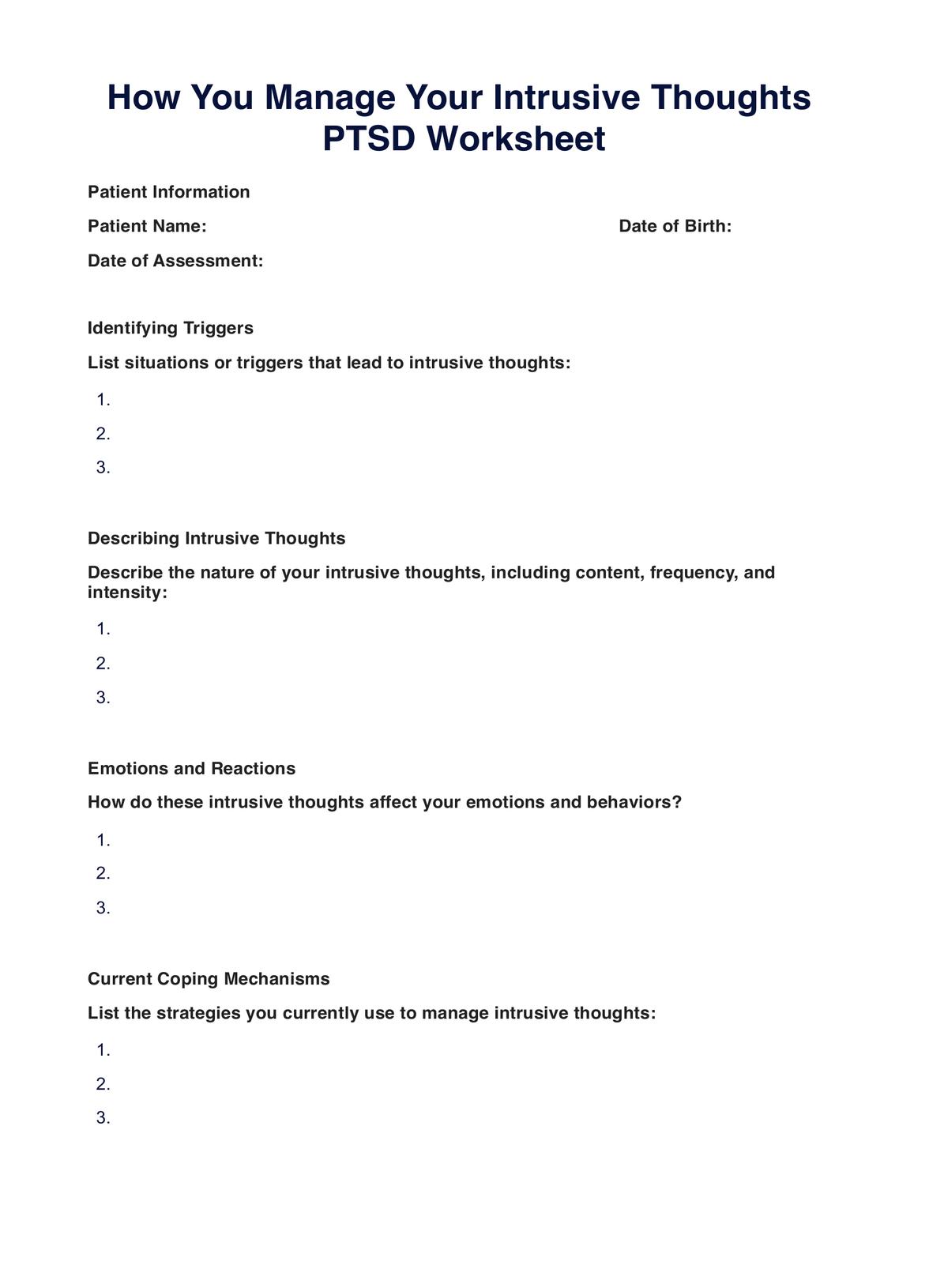The time to complete the worksheet varies depending on individual reflection and engagement. It can take 30 minutes to an hour or more, allowing users to work at their own pace.

How You Manage Your Intrusive Thoughts PTSD Worksheet
Discover how the How You Manage Your Intrusive Thoughts PTSD Worksheet effectively helps individuals cope with PTSD-related intrusive thoughts.
Use Template
How You Manage Your Intrusive Thoughts PTSD Worksheet Template
Commonly asked questions
This worksheet aids in understanding and managing intrusive thoughts related to PTSD by providing a structured framework for self-reflection, goal setting, and developing coping strategies.
It is best used when individuals with PTSD want to gain insight into their intrusive thoughts, track progress, or discuss them in therapy. It's also valuable for healthcare professionals in therapy sessions or support groups.
EHR and practice management software
Get started for free
*No credit card required
Free
$0/usd
Unlimited clients
Telehealth
1GB of storage
Client portal text
Automated billing and online payments











